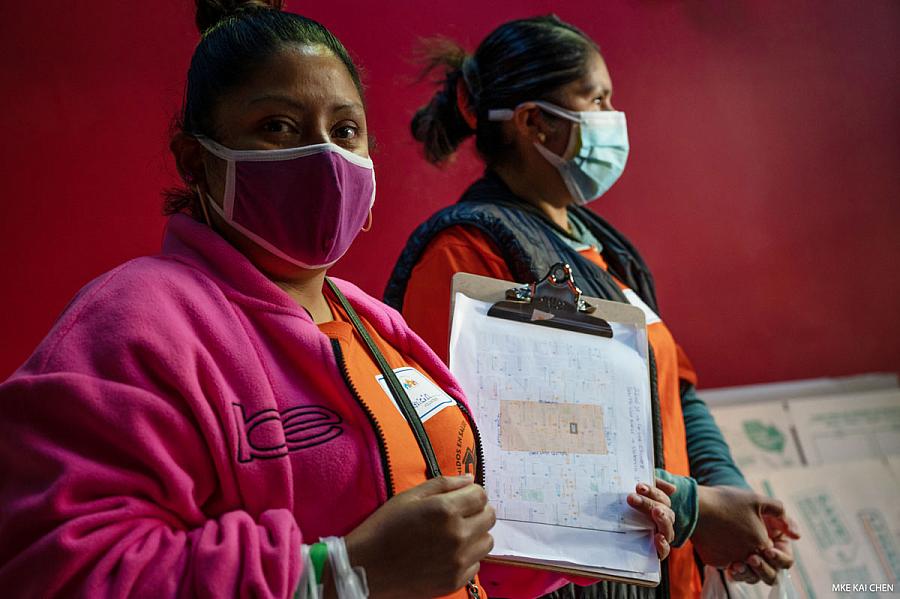Have San Francisco health officials done enough to reach the Latinx community during COVID-19?

Unidos En Salud volunteers Patricia Lopez and Rosario Rodriguez conduct outreach to vulnerable Latino community members within the Mission district of San Francisco for free low barrier COVID-19 testing.
(Mike Kai Chen)
[To read this post in Spanish, click here.]
San Francisco health officials knew as early as late March 2020 — and certainly by April — that the city’s Latinx population was being disproportionately impacted by the COVID-19 epidemic, and yet failed to take effective measures to address the crisis. While Latinx residents only make up 15% of the city’s population, the group has represented 64% of confirmed novel coronavirus cases at times, and 84% of COVID-19 related hospitalizations, according to official health data.
The virus is revealing the systemic neglect of the Latinx community and essential workforce in established health care pathways. It was not until Aug. 28, 2020, under pressure from the Latino Parity and Equity Coalition, that the director of city’s health department called the crisis in the city for what it was: “the ongoing Latinx pandemic.” He also admitted that not enough had been done to support this community. Another month went by before the mayor committed $28.5 million in resources towards health, housing, food access, workforce needs, and small businesses to address the epidemic in the Latinx community. Today, the Latinx community still accounts for the highest number and percentage of new cases, with the greatest disproportionality in new case rates among all racial and ethnic groups.
Since the start of the epidemic, El Tecolote has sought to provide the most up-to-date information on the pandemic to our readers. This has included information about resources available to our Latino community, many of whom were suddenly acknowledged as “essential workers,” while seemingly left to fend for themselves when it came to information of the severity of the virus, where and how to get tested, and what to do if one tested positive. We also interviewed COVID-19 survivors and documented their stories for our other readers’ to learn from. Knowing that the Latino community is a diverse one, we reported on the impact this virus had on San Francisco’s Mayan Yucatec community. We recognized that this was not only a San Francisco story, so we began also to focus on the East Bay’s Mayan Mam community as well, and the efforts there to prevent new infections in an area that had seen skyrocketing COVID-19 rates.
With support from the Center of Health Journalism’s 2021 Impact Fund, El Tecolote is launching an inquiry into San Francisco health authority’s efforts to reach our community during the “Latinx Pandemic.” At the heart of the project is a survey that will be developed through a community engagement process, and that will be answered by Latinx essential workers — both women and men, documented and undocumented — to better understand what sources of information shaped their behavior during the pandemic, and whether city outreach efforts have reached them and shaped their behavior.
While we hope to learn how Latinx community members made decisions about whether to get tested, seek health care, and stay home from work based on the information they received from friends, relatives, news sources and government sources of information, we are most interested in investigating and learning about how the city adapted to meet the needs of its Latinx communities. At this point of the pandemic, with vaccines on the horizon and concerns over vaccine safety in our community, we certainly hope the city has taken note of lessons learned and adapted to meet Latinx community members “where they are at.”
Beyond the results of the survey, we are excited to see how community engagement will also improve El Tecolote’s reporting to address the interests of our bilingual and multigenerational readers and podcast listeners, whether they be sheltering-at-home or grinding away at essential jobs.

